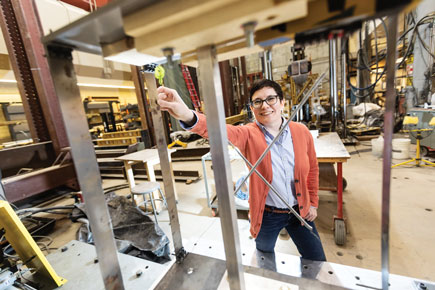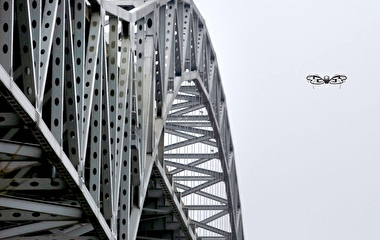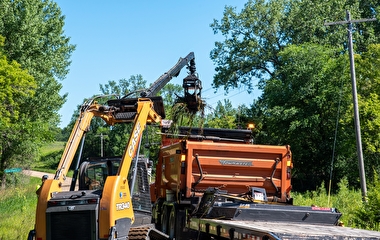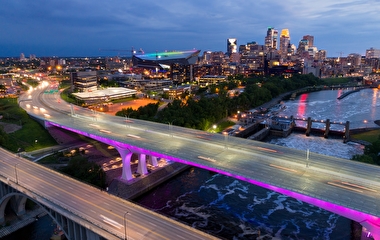Lauren Linderman had just graduated from college in St. Louis with her bachelor’s in civil engineering when the I-35W bridge collapsed in 2007, making international headlines. Little did she know that a decade later, she’d be conducting cutting-edge research in Minnesota on how to increase infrastructure safety—including monitoring the replacement for that very bridge.
Linderman, an assistant professor in the Department of Civil, Environmental, and Geo- Engineering, is one of many faculty members working on smart technology. She discussed her research and its implications in the summer 2019 issue of the College of Science and Engineering’s Inventing Tomorrow magazine.
Linderman studies smart technology applications in two broad categories: monitoring the stability and performance of structures and buildings, and limiting their response—in hopes of minimizing injury and damage—in catastrophic events like earthquakes. She scrutinizes measurements from hundreds of sensors on the I-35W bridge to glean indications about what kind of changes it’s undergoing, potential implications of those changes, and how future bridge design could improve even more.
She’s collaborating with Professor Carol Shield on the bridge-monitoring project. The sensors, placed in 2008 by the Minnesota Department of Transportation, measure responses like acceleration (or vibration), strain, temperature, and displacement.
“There are other structures that have used this technology, but I think this is the only structure where we’ve had sensors on there since inception that are still operating,” Linderman says. “That’s been really interesting, because it’s allowed us to look at confirming some design considerations.”
One such consideration is called “creep.” As Linderman explains, “Concrete creeps. In lay terms, what that means is that under constant load, it will continue to get shorter with time. That’s really hard to model accurately. Here we were able to capture the long-term creep of the structure over the first 10 years, which is when the majority of the creep happens.”
Linderman and Shield believe their analysis suggests that after a decade, the I-35W replacement bridge isn’t quite done creeping—a subtle revelation that wouldn’t have been accessible without current technology and a growing knowledge of how to deploy it.
The stress on bridges in places with wildly variable temperature and humidity is greater, Linderman says, and the task of monitoring them more complex.
In a related project, Linderman is examining sensor selection and placement—trying to discern what’s the most efficient and cost-effective way to use available smart technology.
“Longer term, our goal is to incorporate the reliability of the sensors into where you put them,” she says. “By that I mean, what if a sensor fails? Do I also want something [another sensor] that’s redundant?”
Through her work, Linderman often imagines some of the smart tools that don’t yet exist.
“There are still sensors that I think would be exciting to develop,” she says. “Corrosion sensing [for bridges] is probably the holy grail. One of the big concerns with concrete structures is if the rebar is corroding, or the prestressing strand is corroding, you can’t see it.” Instead, engineers rely on a complicated process of deduction. “If you could detect that,” she added, “that would be pretty cool.”
(Adapted with permission from CSE Inventing Tomorrow, summer 2019; written by Susan Maas.)



